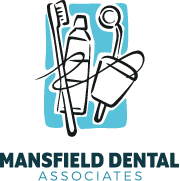While most contact sports require facial protection in order to play, some sports like skateboarding, basketball, gymnastics, and baseball are still lagging behind when it comes to rules for protecting teeth. While this may seem like an excessive amount of protection for seemingly harmless sports, consider these statistics: the National Youth Sports Safety Foundation estimates that five million teeth will be lost due to tooth injury during sports activities this year alone. In fact, this organization reports that between 10 percent to 39 percent of childhood injuries are related to teeth. Dr. Jones and Dr. Harris of Mansfield Dental Associates offer advice for protecting your family from tooth trauma.
Avoid Tooth Trauma with Oral and Facial Protection
Wearing a mouthguard is your smile’s first line of defense against dental emergencies. Mouthguards work by absorbing and dispersing energy at the site of impact to the mouth. Choosing the right mouthguard can save you from the pain of losing a tooth as well as the financial burden that comes with emergency treatment and replacing teeth. Most sports related dental injuries occur in the front, upper teeth, also called maxillary teeth; therefore, a knocked out tooth is not only painful, but also conspicuous.
How to Buy the Right Mouthguard
Be sure to choose a mouthguard that fits comfortably and adequately covers all of your teeth in an arch. For dental protection for smaller children, pick a mouthguard made specifically for youth athletes that is made to fit smaller mouths. Letting your child choose a mouthguard in his or her favorite color may encourage more consistent usage. Shopping for a mouthguard can be overwhelming if you are unsure about the types of mouthguards available. Here are the three main categories of mouthguards and how each can benefit you.
Stock Mouthguards Can Protect Braces
These pre-made and molded mouthguards are one-size-fits-all. Over-the-counter mouth protection generally requires clenching your teeth to hold the mouthguard in place. Overtime this can become tiresome on your jaw, and even have negative effects on TMD/TMJ sufferers. While these mouthguards do not offer as much comfort, they are a good option for covering both arches in your smile if you are undergoing orthodontic treatment.
Mouth-formed Protection Conforms to Your Bite
Thermoplastic material allows these mouthguards to be molded after being immersed in boiling water for a few minutes. Often called boil-and-bite mouthguards, this form of oral protection conforms to the shape of your mouth. While mouth-formed cushions are a less expensive option than custom-made mouthguards, they do not offer the same amount of comfort or protection.
Custom-Made Mouthguards Offer the Most Comfort
Using vacuum-forming or heat-lamination techniques, dentists form these mouthguards to your exact occlusion and mouth shape. The protection usually covers the top or the bottom arch allowing for ease with breathing and speaking. The American Academy of Pediatric Dentistry recommends custom-fabricated mouthguards as the best oral and facial protection for contact or collision sports.
Dr. S. Blair Jones and Dr. D. Seth Harris recommend protecting your teeth with mouthguards during any sports activity. Mansfield Dental Associates is committed to helping you prevent tooth injury. For more information about how to protect yourself and your family from dental emergencies, contact our Mansfield dentist office at (817) 259-1357 to schedule an appointment.
(817) 259-1357





Recent Comments